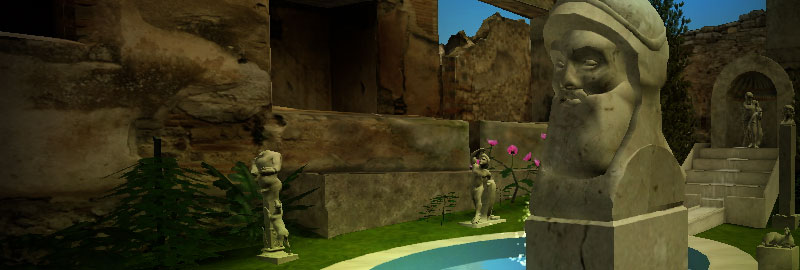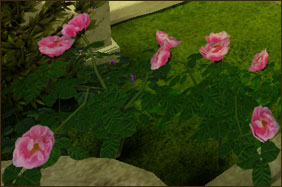 |
 |
 |
 |
           |
 |
 |


 |
 |

The installation enables the museum visitors to explore the interior and the garden of the house of Marcus Lucretius almost
as if being there. Especially with the immersive display it is possible to build spatial understanding by moving around and
observing the house in real scale. The focus when creating the model was more on the good quality of the visual representation
— one could say it was built to provide the museumgoers a special experience.
In addition to the mere walls, roof and other structure of the house there hotspots with additional interactive material. Examples of these
are panoramic images and photos, reconstructed frescos and statues, and texts describing different locations and found artifacts. The garden
has also been rebuilt in 3D and contains a fountain, plants, flowers and statues.
The 3D model of the house was modeled in 3ds Max and then imported into Quest3D software for final composition, real-time
displaying and user interaction design. Each wall in the model has a unique high detail photographic texture, so a modern 3D accelerator
hardware is necessary for the realtime displaying of the model. Dynamic exposure, high dynamic range lightmaps and water reflection effects
require even more computational resources. |
|
 |
|


